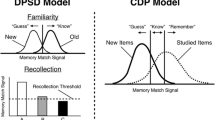Abstract
Producing and interpreting functional brain data is part of the negotiation we imagine our brain. To take a closer look at the idea of brain imaging as a form of visual knowledge, it is necessary to put the research of today into a historical context. In my article I will point to a specific approach of functional imaging which depends on historical shifts entangled with the visual aspect of producing pictures of the brain. I will bring out the interaction of issues like techniques, models and historical assumptions of the brain and link them with the way the brain images are presented. The aesthetic dimensions (Rancière) in the pictures are also questions of ethics and normativity.
Similar content being viewed by others
Notes
man weiß nichts über seine Sinne bevor nicht Medien Modelle und Metaphern für sie bereitstellen. (Kittler [20])
Original: “[…] eine der wundervollsten Erfindungen der Neuzeit, einer der interessantesten Fortschritte auf dem Gebiet der photographischen Wiedergabe des Lebens in all seiner Mannigfaltigkeit. Was kein Zeitalter vor uns gekonnt hat, das ist mit ihm möglich geworden: den Ablauf der Naturvorgänge, die Bewegungen alles Lebendigen und die Handlungen der Menschen in der Mitwelt objektiv getreu zu schildern und der Nachwelt zu stets möglicher Reproduktion zu überliefern.” Gaupp 1912: 1
Futurama is an American animated science fiction sitcom created by Matt Groening televised from 1999 to 2003 in the American television.
References
Rancière, Jaques. 2008. Die Aufteilung des Sinnlichen. Die Politik der Kunst und ihre Paradoxien, Berlin.
Reichert, Ramon. 2007. Im Kino der Humanwissenschaften. Studien zur Medialisierung wissenschaftlichen Wissens; Bielefeld.
Burri, Regula Valérie. 2008. Doing images. Zur Praxis medizinischer Bilder. Bielefeld.
Cartwright, Lisa. 2001. Practices of looking. Oxford University Press.
Burke, James. 1985. The day the universe changed. Little, Brown, and Company
Mitchell, W. J. T. 1986. Iconology: Image, text, ideology. University of Chicago Press.
Latour, Bruno. 1990. Drawings things together. In Representation in Scientific Practice, eds. Michael Lynch, Steve Woolgar, pp. 19–68. MIT Press.
Foucault, Micchel. 1973. The birth of the clinic: An archaeology of medical perception.
Hagner M (1997) Homo Cerebralis. Der Wandel vom Seelenorgan zum Gehirn; Berlin
Canguilhem, Georges. 1980. Gehirn und Denken, lecture. In: Grenzen medizinischer Rationalität: historisch—epistemologische Untersuchungen; Tübingen 1989.
Rose, Nikolas. 2007. The politics of life itself. Princeton University Press.
Hagner, M. 2006. Der Geist bei der Arbeit. Göttingen: Historische Untersuchungen zur Hirnforschung.
Logothetis, N.K. 2008. What we can do and what we cannot do with fMRI. Nature 453: 869–878. doi:10.1038/nature06976.
De Lauretis, Teresa. 1984. Alice doesn’t: Feminism, semiotics, cinema. Indiana University Press.
Carter, Rita. 1999. Mapping the mind. University of California Press.
Barad, Karen. 2007. Meeting the Universe Halfway; Duke University Press.
Haraway, Donna. 1990. Simians, cyborgs, and women. Routledge.
Rouse, Joseph. 1996. Engaging science: How to understand its practices philosophically. Cornell University Press.
Schott, Geoffrey D. Colored Illustrations of the Brain: Some Conceptual and Contextual Issues; Neuroscientist first published on June 7, 2010 http://nro.sagepub.com/content/early/2010/05/19/1073858409355817 ; last visit 11/18/2010.
Kittler, Friedrich. 2002. Optische Medien. Berliner Vorlesungen 1999; Berlin.
Benjamin, Walter. 1936. The work of art in the age of mechanical reproduction. www.marxists.org/reference/subject/philosophy/works/ge/benjamin.htm; last visit 11/18/2010.
Lythgoe, Mark. Images that changed the World: Brain Scan; BBC report Tuesday 26 Jan 2010.
Gould, Stephan Jay. 1996. The mismeasurement of man. W. W. Norton & Company.
Acknowledgement
I would like to thank Anelis Kaiser and Judith Coffey for their detailed and insightful comments that helped to improve this article.
Author information
Authors and Affiliations
Corresponding author
Rights and permissions
About this article
Cite this article
Fitsch, H. (A)e(s)th(et)ics of Brain Imaging. Visibilities and Sayabilities in Functional Magnetic Resonance Imaging. Neuroethics 5, 275–283 (2012). https://doi.org/10.1007/s12152-011-9139-z
Received:
Accepted:
Published:
Issue Date:
DOI: https://doi.org/10.1007/s12152-011-9139-z




